Click on images to enlarge

infestation in Hawaii (Photo: Forest and Kim Starr, USGS)
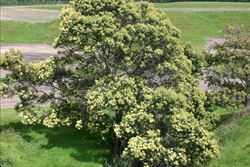
habit in flower (Photo: Trevor James)
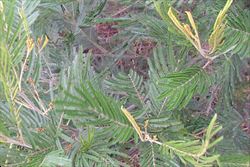
the greenish-yellow young foliage of this species (Photo: Sheldon Navie)
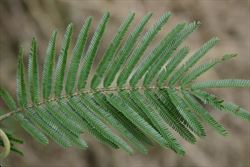
twice-compound leaf with numerous branchlets (Photo: Trevor James)
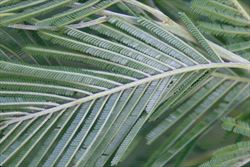
hairy younger stems and leaf undersides (Photo: Trevor James)
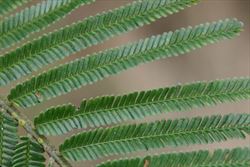
close-up of leaf showing the glands between pairs of branchlets (Photo: Trevor James)
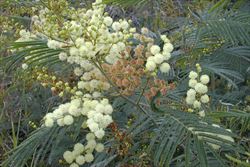
cream-coloured flower clusters (Photo: Forest and Kim Starr, USGS)
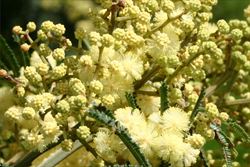
close-up of pale yellow globular flower clusters (Photo: Trevor James)
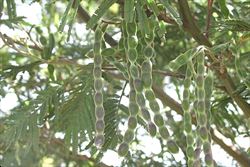
immature fruit (Photo: Jackie Miles and Max Campbell)
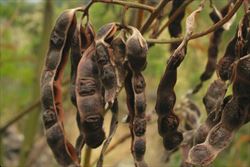
mature fruit (Photo: Forest and Kim Starr, USGS)
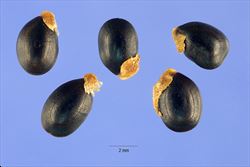
close-up of seeds with small fleshy arils (Photo: Steve Hurst at USDA PLANTS Database)
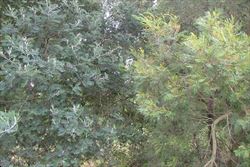
comparison of silver wattle (Acacia dealbata subsp. dealbata), left, and black wattle (Acacia mearnsii), right (Photo: Sheldon Navie)
Scientific Name
Acacia mearnsii De Wild.
Synonyms
Acacia decurrens Willd. var. mollis Lindl (misapplied)
Acacia mearnsi De Wild.
Acacia mollissima hort. ex Willd. (misapplied)
Racosperma mearnsii (De Wild.) Pedley
Family
Fabaceae: sub-family Mimosoideae (New South Wales)
Leguminosae (South Australia)
Mimosaceae (Queensland, the ACT, Victoria, Tasmania, Western Australia and the Northern Territory)
Common Names
black wattle, black wattle, green wattle, late black wattle, tan wattle
Origin
Native to large parts of south-eastern Australia (i.e. New South Wales, the ACT, Victoria, Tasmania and south-eastern South Australia). In New South Wales it occurs naturally along the coast and tablelands south from Peats Ridge, just north of Sydney. It is widespread in Victoria and Tasmania and in South Australia its natural distribution is limited to the south-eastern corner of the state, south of Naracoorte.
Naturalised Distribution
Naturalised in south-western Western Australia. Also naturalised beyond its native range in some parts of south-eastern and southern South Australia (i.e. in the Southern Lofty Mountains and on Eyre Peninsula) and in some parts of New South Wales (i.e. in the coastal districts of northern New South Wales).
Naturalised overseas in China, Japan, Taiwan, India, Israel, southern Europe (i.e. France, Italy, Portugal and Spain), southern Africa (i.e. South Africa, Swaziland, Tanzania, Uganda and Zimbabwe), Madagascar, the Seychelles, La Reunion, New Zealand, the Cook Islands, Hawaii and south-western USA (i.e. California).
Notes
Black wattle (Acacia mearnsii) grows naturally in gullies or on hillsides in wet sclerophyll forests, open woodlands, tussock grasslands and coastal scrub in south-eastern Australia. It is widely cultivated in southern Australia and other parts of the world, as an ornamental and forestry tree, and readily escapes from these plantings.
This species has naturalised between Wyong and Swansea in New South Wales, where it appears to have mainly become established from roadside rehabilitation plantings. Black wattle (Acacia mearnsii) is also naturalised from Perth to Balingup in south-western Western Australia, where it grows on riverbanks, ridges, swamp flats and hillslopes. It has also been recorded from conservation areas in this region (i.e. it is listed as a weed of concern in Lane Poole Reserve).
While this species it not yet a significant problem in Australia, at least compared to other wattles, it is probably the most invasive Australian acacia in other parts of the world. Black wattle (Acacia mearnsii) is listed in the Global Invasive Species Database and is regarded to be among the top 100 of the "World's Worst Invasive Alien Species". It is a serious invader in natural areas of the Nilgiris in southern India and is a major invasive tree species in South Africa. It has probably had its greatest impact in the fynbos in South Africa, where it is estimated to have invaded some 2.5 million hectares. In fact, it is regarded by many environmentalists to be South Africa's worst weed species, because it transforms grasslands and savannas into exotic woodlands. Black wattle (Acacia mearnsii) is also regarded as being particularly highly invasive in Hawaii and on La Réunion.

